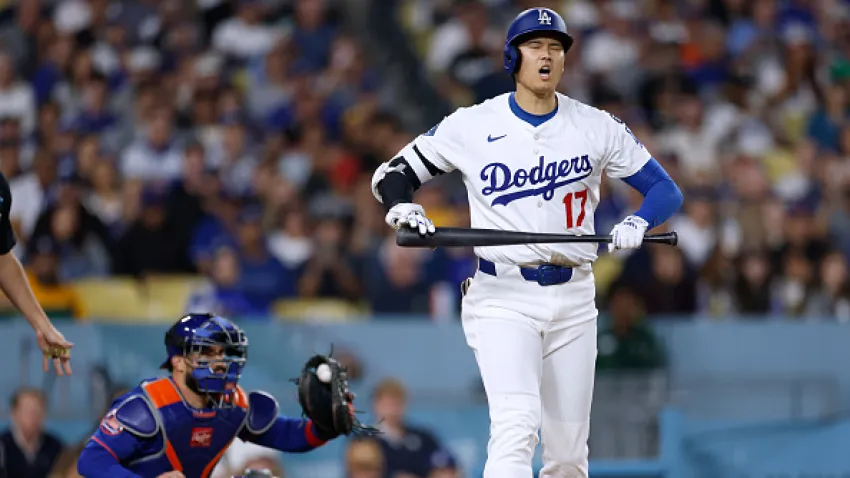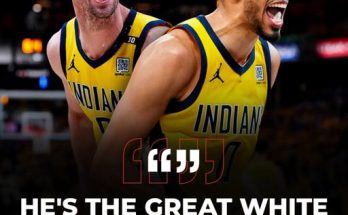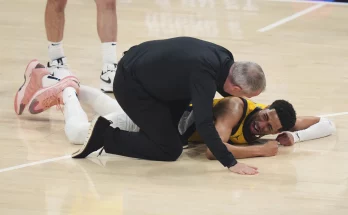The Los Angeles Dodgers—usually an offensive juggernaut—found themselves surprisingly powerless at the plate in a 6-1 loss to the New York Mets at Citi Field on Wednesday night. It was a performance that left many fans and analysts scratching their heads, as one of the most explosive lineups in Major League Baseball went cold against a Mets team that has struggled for consistency all season.
The loss was not just a blip; it was a microcosm of recent struggles for the Dodgers, who have failed to find rhythm offensively in key moments over the last two weeks. For a team expected to contend for a World Series title with names like Mookie Betts, Shohei Ohtani, and Freddie Freeman headlining the lineup, a game like this serves as a concerning reminder that even the best rosters are vulnerable to slumps.
Let’s take a closer look at how the Dodgers’ offense disappeared, how the Mets capitalized, and what this game might signal for the team moving forward.
Mets’ Pitching Shines Under the Bright Lights
New York Mets starter José Quintana turned in his best outing of the season, stifling Dodgers hitters across six strong innings. The veteran left-hander allowed just one run on four hits, striking out six and walking two. Quintana’s command and pitch mixing were superb as he frequently got ahead in the count, making life difficult for Los Angeles hitters all night.
Quintana utilized his fastball-curveball combination with surgical precision. The Dodgers’ stars were held in check—Betts went 1-for-4 with a harmless single, Ohtani was 0-for-3 with a walk, and Freeman managed just a weak groundout and a strikeout.
The Mets bullpen followed suit, with Reed Garrett and Drew Smith each throwing a scoreless inning, and closer Edwin Díaz—who has faced his own set of challenges this year—locked down the ninth with ease, retiring the side in order and touching 100 mph on the radar gun.
Dodgers’ Offense: A Night to Forget
The Dodgers’ lone run came in the top of the fourth inning when Max Muncy lifted a sacrifice fly to center field, scoring Teoscar Hernández. That meager offense was all Los Angeles could muster. The team finished with just five hits on the night, only one of which went for extra bases—a double by Miguel Rojas, the light-hitting infielder who’s typically near the bottom of the batting order.
More troubling was the team’s situational hitting, or lack thereof. The Dodgers went 0-for-6 with runners in scoring position and left eight men stranded. Chris Taylor, who has struggled all season, struck out twice in critical spots. James Outman, trying to regain last season’s form, popped up in his only opportunity with a man on base. The bottom of the order simply provided no spark.
Manager Dave Roberts summed it up after the game: “We just didn’t execute. We had some chances, but when you’re not capitalizing on those, it makes it tough. Credit to Quintana, but we’ve got to be better.”
Mets Capitalize Early and Often
While the Dodgers stumbled, the Mets capitalized.
New York jumped on Dodgers starter Tyler Glasnow early. After issuing a leadoff walk to Brandon Nimmo and a double by Francisco Lindor, Glasnow surrendered a two-run single to Pete Alonso in the bottom of the first inning. Just like that, the Mets led 2-0 before many fans had settled into their seats.
Glasnow, who has been solid this season, lacked his usual sharpness. He finished the night with five innings pitched, allowing four runs on seven hits and three walks, striking out five. Though not disastrous, it was a step back for a pitcher who had looked like an ace during his previous starts.
In the fifth, the Mets struck again when Starling Marte launched a two-run home run to left field, making it 4-1. That blast essentially broke the Dodgers’ spirit. The Mets would tack on two more runs in the seventh off reliever Ryan Yarbrough to put the game out of reach.
Ohtani Watch: A Rare Silent Night
Shohei Ohtani entered the night leading the Dodgers in home runs and OPS, but he was unusually quiet against the Mets. He struck out swinging on a filthy curveball in the first inning, grounded into a double play in the third, walked in the sixth, and flied out weakly in the eighth.
For a player who has seemed borderline unstoppable this season, the lack of hard contact was noticeable. It was just his second game this year without a ball hit over 95 mph in exit velocity.
The Mets approached Ohtani carefully, refusing to challenge him in the zone and often expanding the strike zone with off-speed offerings. Their plan worked to perfection.
Star Watch: Dodgers’ Core Goes Cold
It wasn’t just Ohtani who looked off. Freddie Freeman is mired in a mini-slump, hitting just .221 over his last ten games. He struck out looking in the third and flew out with runners on in the fifth.
Mookie Betts, despite his consistency throughout the season, has struggled to produce runs lately. His lone single in this game was a blooper that barely made it past the infield.
The combination of Betts, Freeman, and Ohtani went 1-for-10 on the night. When the heart of the order is that quiet, it’s hard for any team—even one as stacked as the Dodgers—to generate offense.
Depth Issues Looming?
One of the biggest storylines beginning to form in Los Angeles revolves around the team’s lack of offensive depth. Outside of the “Big Three” and Teoscar Hernández—who’s been solid—there’s a noticeable production drop-off.
Max Muncy has shown power but is batting below .200. Gavin Lux is still working his way back to form. Miguel Vargas, promoted to spark the lineup, went 0-for-3 with a strikeout.
With injuries limiting the Dodgers’ options, especially in the outfield, the team is relying heavily on call-ups and bench players who haven’t quite found their footing.
There’s increasing pressure on the front office to make a move ahead of the trade deadline if the bottom of the lineup doesn’t start producing.
Mets Turn the Page?
For the Mets, the win might signal a turning point in a season that’s been marred by inconsistency. Manager Carlos Mendoza praised his team’s energy and execution.
“That’s how we have to play,” Mendoza said. “Pitching, defense, timely hitting—it all came together tonight. When we do that, we can beat anyone.”
Pete Alonso’s bat is heating up, Marte looked rejuvenated, and Lindor has quietly raised his average above .270. If the pitching holds up and Edwin Díaz continues to regain his form, the Mets could still claw their way into Wild Card contention.
Looking Ahead
For the Dodgers, the loss drops them to 37-24 on the season. Still first in the NL West, but with the San Diego Padres and San Francisco Giants both inching closer, the margin for error is shrinking.
Tyler Glasnow’s off-night is unlikely to become a trend, but the offense’s inconsistency is beginning to raise legitimate concerns. With a weekend series against the powerful Philadelphia Phillies looming, the Dodgers will need to recalibrate quickly.
One bright spot for Los Angeles: Walker Buehler is expected to return to the rotation within the next two weeks, and Clayton Kershaw is progressing from his shoulder surgery. The pitching staff should get a needed boost, which may relieve some pressure from the faltering bats.
Wednesday night’s 6-1 loss to the Mets was more than just another defeat—it was a warning. The Dodgers, flush with talent and expectations, cannot afford to coast through stretches of underperformance. The offense, which looked otherworldly just weeks ago, has cooled off, and there’s little room for error in a competitive National League.
If the bats don’t wake up soon, particularly from the role players and bottom of the order, Los Angeles could find themselves searching for answers they assumed were already in hand.



